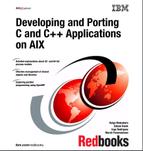5.2. The process flow of a DLPAR operation
A DLPAR operation initiated on the HMC is transferred to the target partition through Resource Monitoring and Control (RMC). The request produces a DLPAR event on the partition. After the event has completed, regardless of the result from the event, a notification will be returned to the HMC in order to mark the completion of the DLPAR operation. This means that a DLPAR operation is considered as a single transactional unit; thus, only one DLPAR operation is performed at a time.
A DLPAR operation is executed in the process flow, as illustrated in Figure 5-1.
Figure 5-1. Process flow of a DLPAR operation[2]

[2] A managed system is a partitioning partitioning-capable pSeries server system managed by the HMC.
The following steps explain the process flow of a DLPAR operation:
1. | The system administrator initiates a DLPAR operation request on the HMC using either the graphical user interface or command line interface. |
2. | The requested DLPAR operation is verified on the HMC with the current resource assignment to the partition and free resources on the managed system before being transferred to the target partition. In other words, the HMC provides the policy that determines whether or not a DLPAR operation request is actually performed on the managed system. |
3. | If the request is a resource addition, the HMC communicates with the global firmware in order to allocate free resources to the target partition through the service processor indicated as arrow A in Figure 5-1. If enough free resources exist on the system, the HMC assigns the requested resource to the specified partition and updates the partition’s object to reflect this addition, and then creates associations between the partition and the resource to be added. |
4. | After the requested DLPAR operation has been verified on the HMC, it will be transferred to the target partition using Resource Monitoring and Controlling (RMC), which is an infrastructure implemented on both the HMC and AIX partitions, as indicated as arrow B in Figure 5-1 on page 211. The RMC is used to provide a secure and reliable connection channel between the HMC and the partitions. Note The connection channel established by RMC only exists between the HMC and the partition where the DLPAR operation is targeted to. There are no connection paths required between partitions for DLPAR operation purposes. |
5. | The request is delivered to the IBM.DRM resource manager running on the partition, which is in charge of the dynamic logical partitioning function in the RMC infrastructure in AIX. As shown in the following example, it is running as the IBM.DRMd daemon process and is included in the devices.chrp.base.rte fileset on AIX 5L Version 5.2 or later: # lssrc -ls IBM.DRM
Subsystem : IBM.DRM
PID : 18758
Cluster Name : IW
Node Number : 1
Daemon start time : Wed Aug 21 16:44:12 CDT 2002
Information from malloc about memory use:
Total Space : 0x003502c0 (3474112)
Allocated Space: 0x0030b168 (3191144)
Unused Space : 0x00043e40 (278080)
Freeable Space : 0x00000000 (0)
Class Name(Id) : IBM.DRM(0x2b) Bound
# ps -ef | head -1 ; ps -ef | grep DRMd | grep -v grep
UID PID PPID C STIME TTY TIME CMD
root 18758 10444 0 Aug 21 - 0:22 /usr/sbin/rsct/bin/IBM.DRMd
# lslpp -w /usr/sbin/rsct/bin/IBM.DRMd
File Fileset Type
---------------------------------------------------------------------------
/usr/sbin/rsct/bin/IBM.DRMd
devices.chrp.base.rte File
Note The absence of the IBM.DRM resource manager in the lssrc -a output does not always mean that the partition has not been configured appropriately for the dynamic logical partitioning. The resource manager will be automatically configured and started by RMC after the first partition reboot if the network configuration is correctly set up on the partition and the HMC.
|
6. | The IBM.DRM resource manager invokes the drmgr command, which is an platform-independent command designed as the focal point of the dynamic logical partitioning support on AIX. As shown in the following example, the drmgr command is installed in the /usr/sbin directory provided by the bos.rte.methods fileset: # whence drmgr /usr/sbin/drmgr # lslpp -w /usr/sbin/drmgr File Fileset Type -------------------------------------------------------------------------- /usr/sbin/drmgr bos.rte.methods File Note The drmgr command should not be invoked by the system administrator in order to directly perform resource changes in a partition. It must be invoked in the context explained here to do so. |
7. | The drmgr command invokes several platform-dependent commands[3] depending on the resource type (CPU, memory, or I/O resource) and request (resource addition or removal) in order to instruct the kernel to process the actual resource change with necessary information.
|
8. | The kernel does many internal tasks. |
9. | After the DLPAR event has completed, regardless of the result, a notification will be returned to the HMC in order to mark the completion of the DLPAR operation, indicated as arrow C in Figure 5-1 on page 211. The notification also includes the exit code, standard out, and standard error from the drmgr command. The system administrator who has initiated the DLPAR operation will see the exit code and outputs on the HMC. |
10. | If the request is a resource removal, the HMC communicates with the global firmware in order to reclaim resources to the free resource pool from the source partition through the service processor, indicated as arrow D in Figure 5-1 on page 211. The HMC unassigns the resource from the partition and updates the partition’s object to reflect this removal, and then removes associations between the partition and the resource that was just removed. |
A DLPAR operation can take a considerable amount of time, depending on the availability and the capability to configure or deconfigure a specific resource.
